 H2Open Journal welcomes new Editor in Chief
H2Open Journal welcomes new Editor in Chief
H2Open Journal, IWA Publishing's fully Open Access journal is pleased to welcome Ashok Chapagain to its team of Editors-in-Chief.
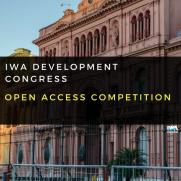 IWA Development Congress - Open Access Waiver Competition
IWA Development Congress - Open Access Waiver Competition
In honor of this year's IWA Development Congress in Buenos Aires, we gave delegates the chance to win a 100% fee waiver to publish their paper Open Access in any one of our 12 IWA Journals.
...
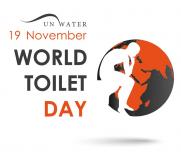 World Toilet Day article collection: free access for limited time
World Toilet Day article collection: free access for limited time
To celebrate World Toilet Day, IWA Publishing compiled a collection of recent relevant papers that will all be free to access until December.
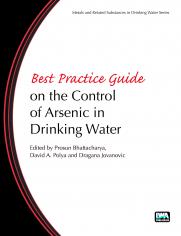 Best Practice Guide on the Control of Arsenic in Drinking Water (Open Access Chapters Only)
Best Practice Guide on the Control of Arsenic in Drinking Water (Open Access Chapters Only)
ISBN: 9781843393856
eISBN: 9781780404929
Best Practice Guide on the Control of Arsenic in Drinking Water, covers aspects of hazard distribution, exposure, health impacts, biomonitoring and remediation, including social and economic issues, is therefore a very timely contribution to disseminating useful knowledge in this area. Five Chapters within this book have been published Open Access. You can access these by clicking on the download link below. To purchase the entire book as either an e-book or in print, please visit the book page.
Arsenic in drinking water derived from groundwater is arguably the biggest environmental chemical human health risk known at the present time, with well over 100,000,000 people around the world being exposed. Monitoring the hazard, assessing exposure and health risks and implementing effective remediation are therefore key tasks for organisations and individuals with responsibilities related to the supply of safe, clean drinking water. Best Practice Guide on the Control of Arsenic in Drinking Water, covering aspects of hazard distribution, exposure, health impacts, biomonitoring and remediation, including social and economic issues, is therefore a very timely contribution to disseminating useful knowledge in this area. The volume contains 10 short reviews of key aspects of this issue, supplemented by a further 14 case studies, each of which focusses on a particular area or technological or other practice, and written by leading experts in the field. Detailed selective reference lists provide pointers to more detailed guidance on relevant practice. This abridged collection of Open Access Chapters includes Chapters 1, 5 8, A3 and A14. To purchase the entire book as either an e-book or in print, please visit the book page.
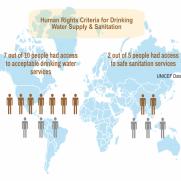 Translating Human Rights criteria into operational terms
Translating Human Rights criteria into operational terms
Translating the Human Rights criteria into action is a challenge for water and sanitation professionals, particularly for regulators. Mohamed Tawfik and the IWA Communications department for Water Policy and Regulation have procvided a helpful outline and infographics to illustrate some of the key criteria & principles in relation to drinking water supply and sanitation services.
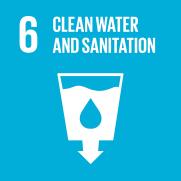 What needs to change to achieve access to sanitation for all by 2030?
What needs to change to achieve access to sanitation for all by 2030?
Andrés Hueso, Senior Policy Analyst for Sanitation at WaterAid, discusses the opportunities and challenges involved in global prioritisation of sanitation and water for all.
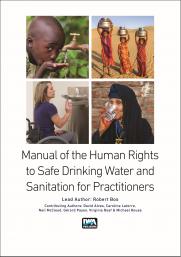 Manual on the Human Rights to Safe Drinking Water and Sanitation for Practitioners
Manual on the Human Rights to Safe Drinking Water and Sanitation for Practitioners
ISBN: 9781780407432
eISBN: 9781780407449
The Manual highlights the human rights principles and criteria in relation to drinking water and sanitation. It explains the international legal obligations in terms of operational policies and practice that will support the progressive realisation of universal access.
The Manual introduces a human rights perspective that will add value to informed decision making in the daily routine of operators, managers and regulators. It also encourages its readership to engage actively in national dialogues where the human rights to safe drinking water and sanitation are translated into national and local policies, laws and regulations. Creating such an enabling environment is, in fact, only the first step in the process towards progressive realisation. Allocation of roles and responsibilities is the next step, in an updated institutional and operational set up that helps apply a human rights lens to the process of reviewing and revising the essential functions of operators, service providers and regulators.
Measuring Willingness-to-Pay for Water and Sanitation by People Living with HIV and AIDs in South Africa
Journal author Dr Ephias M. Makaudze outlines the significance of his studies into the importance of clean water and safe sanitation to people living with HIV and AIDs in South Africa, where rising urban slum population increasingly strains the resources of local municipalities.
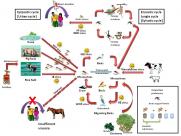 The Zika virus: we should expect more like it!
The Zika virus: we should expect more like it!
Robert Armon, author of the comprehensive book: Environmental Aspects of Zoonotic Diseases (2012), sheds light on the global problem of flaviviruses such as Zika. He notes that this recently publicised disease is just one example of many severe viruses that could flourish in the right environmental conditions.
A Brief History of Water and Health from Ancient Civilizations to Modern Times
Water is life – and life on earth is linked to water. Our existence is dependent on water, or the lack of it, in many ways, and one could say that our whole civilization is built on the use of water. This article examines the influence of water on public health throughout history. Farming and the development of settlements lead to the beginning of the problem that faces mankind today – how to get drinkable water for humans and cattle and how to manage the waste we produce. The availability of water in large quantities has been considered an essential part of civilization throughout the different periods: Roman baths needed a lot of water, as do the water closets and showers used in current Western civilization. The importance of good quality drinking water has been established for years. However, the importance of proper sanitation was not understood until the 19th century.